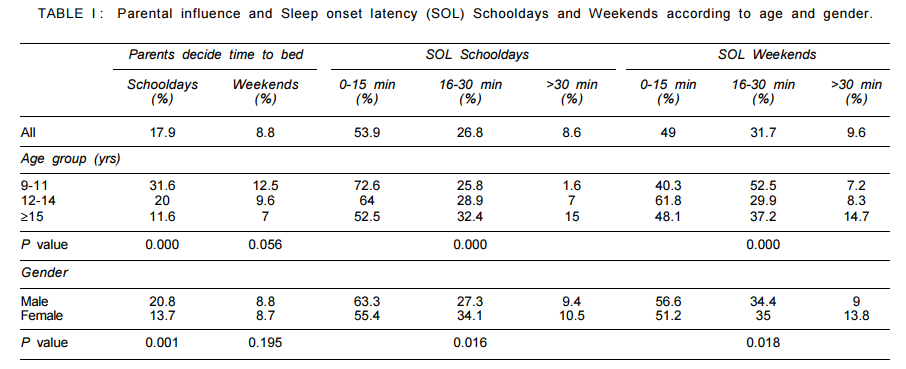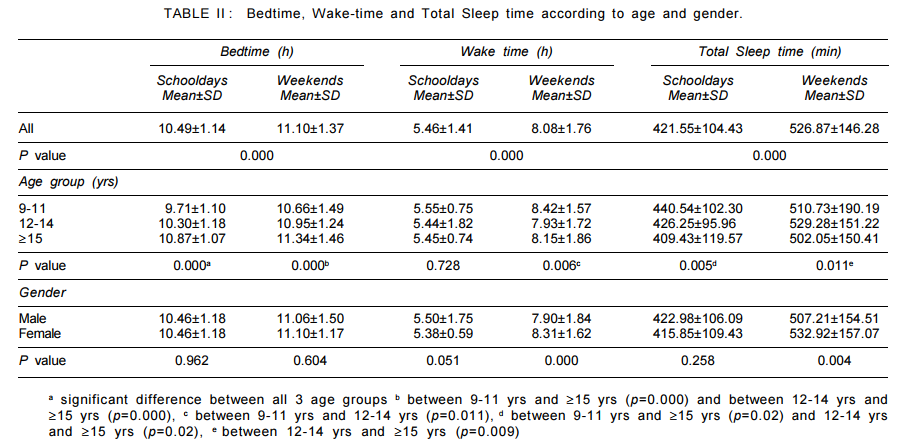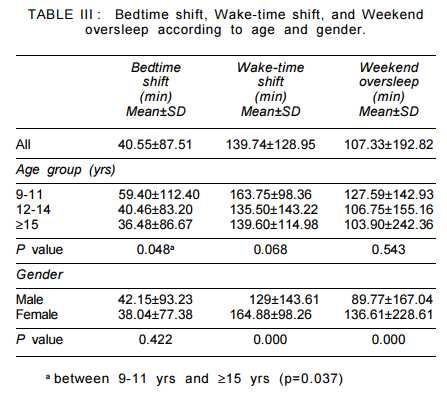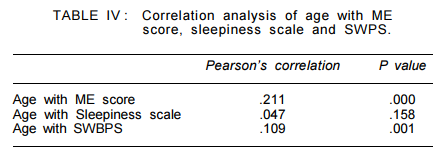- Chahal H, Fung C, Kuhle S, Veugelers PJ. Availability and
night-time use of electronic entertainment and
communication devices are associated with short sleep
duration and obesity among Canadian children. Pediatr
Obes 2013 Feb; 8(1): 42–51.
- Short MA, Gradisar M, Wright H, Lack LC, Dohnt H,
Carskadon MA. Time for bed: parent-set bedtimes
associated with improved sleep and daytime functioning
in adolescents. Sleep 2011 Jun 1; 34(6): 797–800.
- Gruber R, Cassoff J, Frenette S, Wiebe S, Carrier
J. Impact of Sleep Extension and Restriction on
Children’s Emotional Lability and Impulsivity. Pediatrics
[Internet]. 2012 Oct 15; Available from: http://
pediatrics.aappublications.org/content/early/2012/10/10/
peds.2012-0564.abstract
- Wolfson AR, Carskadon MA. Sleep schedules and
daytime functioning in adolescents. Child Dev 1998 Aug;
69(4): 875–887.
- Carskadon MA, editor. Adolescent sleep patterns:
biological, social, and psychological influences.
Cambridge/; New York: Cambridge University Press; 2002.
297 p.
- Carskadon MA, Vieira C, Acebo C. Association between
puberty and delayed phase preference. Sleep 1993 Apr;
16(3): 258–262.
- Russo PM, Bruni O, Lucidi F, Ferri R, Violani C. Sleep
habits and circadian preference in Italian children and
adolescents. J Sleep Res 2007 Jun; 16(2): 163–169.
- Carskadon MA, Acebo C, Jenni OG. Regulation of
adolescent sleep: implications for behavior. Ann N Y Acad
Sci 2004 Jun; 1021: 276–291.
- Wolfson AR, Carskadon MA, Acebo C, Seifer R, Fallone
G, Labyak SE, et al. Evidence for the validity of a sleep
habits survey for adolescents. Sleep 2003 Mar 15; 26(2):
213–216.
- Vaipuna TFW, Williams SM, Farmer VL, Meredith-Jones
KA, Richards R, Galland BC, et al. Sleep patterns
in children differ by ethnicity: cross-sectional and
longitudinal analyses using actigraphy. Sleep Health 2018
Feb; 4(1): 81–86.
- Vidal H, Shochat T. Early to bed, early to rise: sleep
perceptions, patterns and related behaviors in ultraorthodox Jewish adolescents in Israel. Sleep Health 2017
Dec; 3(6): 458–464.
- Owens JA, Dearth-Wesley T, Herman AN, Oakes JM,
Whitaker RC. A quasi-experimental study of the impact of
school start time changes on adolescent sleep. Sleep
Health 2017 Dec; 3(6): 437–443.
- Meyer C, Barbosa DG, Junior GJF, Andrade RD, Silva
DAS, Pelegrini A, et al. Proposal of cutoff points for
pediatric daytime sleepiness scale to identify excessive
daytime sleepiness. Chronobiol Int 2017 Nov 16; 1–9.
- Marx R, Tanner-Smith EE, Davison CM, Ufholz L-A,
Freeman J, Shankar R, et al. Later school start times for
supporting the education, health, and well-being of high
school students. Cochrane Database Syst Rev 2017 03;
7: CD009467.
- Hayes JF, Balantekin KN, Altman M, Wilfley DE, Taylor CB,
Williams J. Sleep Patterns and Quality Are Associated
with Severity of Obesity and Weight-Related Behaviors in
Adolescents with Overweight and Obesity. Child Obes
Print 2018 Jan; 14(1): 11–17.
- Schweizer A, Berchtold A, Barrense-Dias Y, Akre C,
Suris J-C. Adolescents with a smartphone sleep less
than their peers. Eur J Pediatr 2017 Jan; 176(1): 131–136.
- Wolfson AR, Carskadon MA. Understanding adolescents’
sleep patterns and school performance: a critical
appraisal. Sleep Med Rev 2003 Dec; 7(6): 491–506.
- Cohen-Zion M, Shiloh E. Evening chronotype and
sleepiness predict impairment in executive abilities and
academic performance of adolescents. Chronobiol Int
2017 Nov 7; 1–9.
- Thun E, Bjorvatn B, Flo E, Harris A, Pallesen S. Sleep,
circadian rhythms, and athletic performance. Sleep Med
Rev 2015 Oct; 23: 1–9.
- Russo PM, Biasi V, Cipolli C, Mallia L, Caponera E. Sleep
habits, circadian preference, and school performance in
early adolescents. Sleep Med 2017 Jan; 29: 20–22.
- Milewski MD, Skaggs DL, Bishop GA, Pace JL, Ibrahim
DA, Wren TAL, et al. Chronic lack of sleep is associated
with increased sports injuries in adolescent athletes. J Pediatr Orthop 2014 Mar; 34(2): 129–133.
- Wang J, Adab P, Liu W, Chen Y, Li B, Lin R, et al.
Prevalence of adiposity and its association with sleep
duration, quality, and timing among 9-12-year-old children
in Guangzhou, China. J Epidemiol 2017 Nov; 27(11):
531–537.
- Nam GE, Han K, Kim DH, Lee JH, Seo WH. Sleep duration
is associated with body fat and muscle mass and waist-to-height ratio beyond conventional obesity parameters in
Korean adolescent boys. J Sleep Res 2017 Aug; 26(4):
444–452.
- Levenson JC, Soehner A, Rooks B, Goldstein TR, Diler R,
Merranko J, et al. Longitudinal sleep phenotypes among
offspring of bipolar parents and community controls. J
Affect Disord 2017 Jun; 215: 30–36.
- Arrona-Palacios A. High and low use of electronic media
during nighttime before going to sleep: A comparative
study between adolescents attending a morning or
afternoon school shift. J Adolesc 2017 Dec; 61: 152–
163.
- Ferreira C, Ferreira H, Vieira MJ, Costeira M, Branco L,
Dias Â, et al. [Epidemiology of Internet Use by an
Adolescent Population and its Relation with Sleep Habits].
Acta Med Port 2017 Aug 31; 30(7–8): 524–533.
- Robinson TN, Banda JA, Hale L, Lu AS, Fleming-Milici F,
Calvert SL, et al. Screen Media Exposure and Obesity in
Children and Adolescents. Pediatrics 2017 Nov; 140(Suppl
2): S97–S101.
- Continente X, Pérez A, Espelt A, López MJ. Media devices,
family relationships and sleep patterns among adolescents
in an urban area. Sleep Med 2017 Apr; 32: 28–35.
- Kwok SWH, Lee PH, Lee RLT. Smart Device Use and
Perceived Physical and Psychosocial Outcomes among
Hong Kong Adolescents. Int J Environ Res Public Health
2017 18; 14(2).
- Wu X, Tao S, Zhang S, Zhang Y, Chen K, Yang Y, et al.
Impact of screen time on mental health problems
progression in youth: a 1-year follow-up study. BMJ Open
2016 09; 6(11): e011533.
- Pyper E, Harrington D, Manson H. Do parents’ support
behaviours predict whether or not their children get
sufficient sleep? A cross-sectional study. BMC Public
Health 2017 24; 17(1): 432.
- Copenhaver EA, Diamond AB. The Value of Sleep on
Athletic Performance, Injury, and Recovery in the Young
Athlete. Pediatr Ann 2017 Mar 1; 46(3): e106–e111.
- Bailey-Davis L, Peyer KL, Fang Y, Kim J-K, Welk GJ.
Effects of Enhancing School-Based Body Mass Index
Screening Reports with Parent Education on Report Utility
and Parental Intent To Modify Obesity Risk Factors. Child
Obes Print 2017 Apr; 13(2): 164–171.
- Van Dyk TR, Zhang N, Catlin PA, Cornist K, McAlister S,
Whitacre C, et al. Feasibility and Emotional Impact of
Experimentally Extending Sleep in Short-Sleeping
Adolescents. Sleep 2017 Sep 1; 40(9).
- Bermejo-Martins E, López-Dicastillo O, Mujika A. An
exploratory trial of a health education programme to
promote healthy lifestyles through social and emotional
competence in young children: Study protocol. J Adv Nurs
2018 Jan; 74(1): 211–222.
- Hager ER, Calamaro CJ, Bentley LM, Hurley KM, Wang Y,
Black MM. Nighttime Sleep Duration and Sleep Behaviors
among Toddlers from Low-Income Families: Associations
with Obesogenic Behaviors and Obesity and the Role of
Parenting. Child Obes Print 2016 Oct; 12(5): 392–400.
- COUNCIL ON COMMUNICATIONS AND MEDIA. Media Use
in School-Aged Children and Adolescents. Pediatrics 2016
Nov; 138(5).
- Schweizer A, Berchtold A, Barrense-Dias Y, Akre C,
Suris J-C. Adolescents with a smartphone sleep less
than their peers. Eur J Pediatr 2017 Jan; 176(1): 131–
136.
- Granich J, Rosenberg M, Knuiman MW, Timperio A.
Individual, social, and physical environment factors
associated with electronic media use among children:
sedentary behavior at home. J Phys Act Health 2011 Jul;
8(5): 613–625.
- Dube N, Khan K, Loehr S, Chu Y, Veugelers P. The use
of entertainment and communication technologies before
sleep could affect sleep and weight status: a populationbased study among children. Int J Behav Nutr Phys Act
2017 19; 14(1): 97.
|




